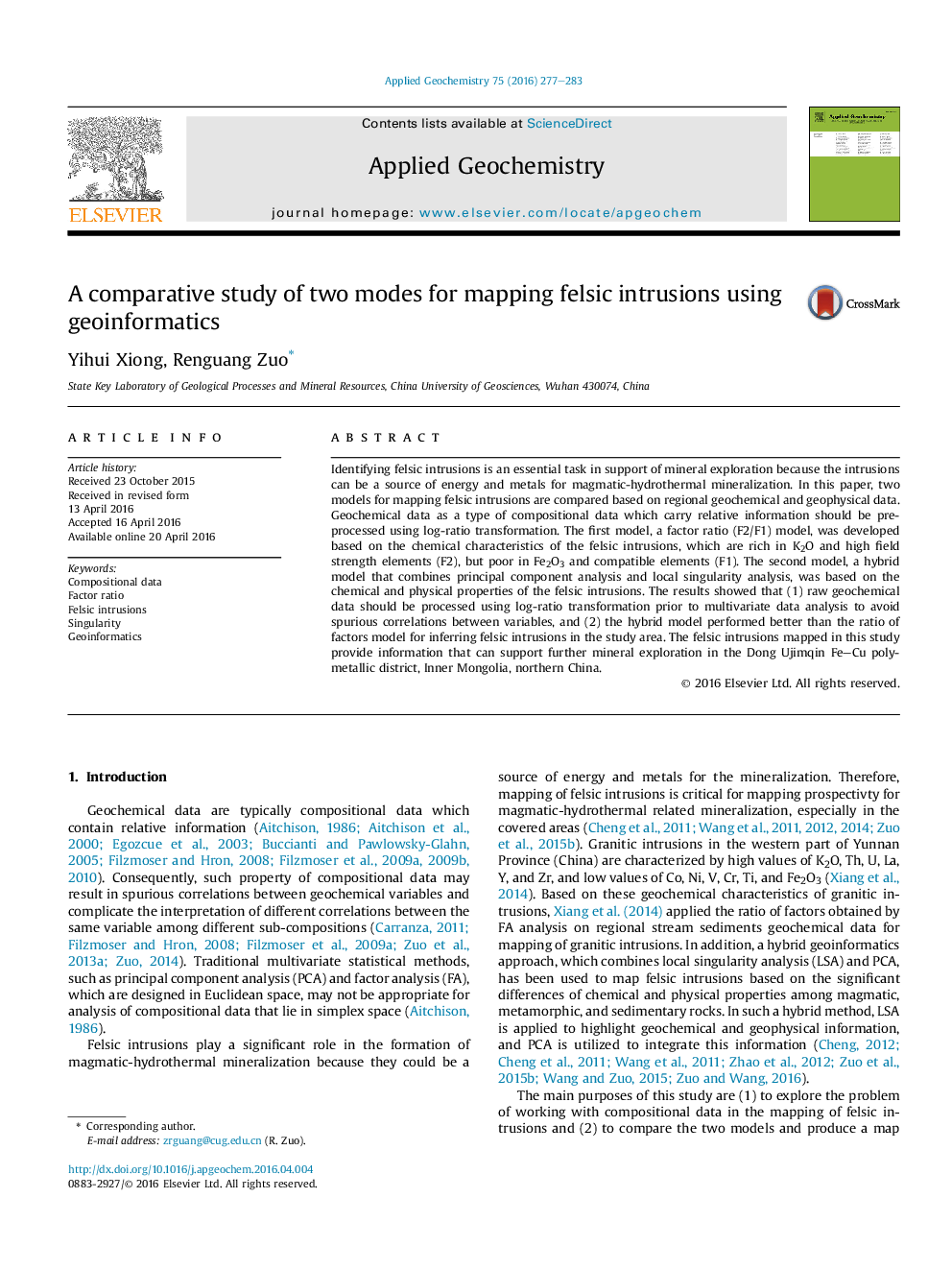| Article ID | Journal | Published Year | Pages | File Type |
|---|---|---|---|---|
| 5752660 | Applied Geochemistry | 2016 | 7 Pages |
â¢The problem of working with relative (compositional) data in geochemistry is addressed.â¢Comparison of methods demonstrates that data need to be log-ratio transformed for the data analysis.â¢A hybrid model performs better than a ratio of factors model for mapping the occurrence of felsic intrusions.
Identifying felsic intrusions is an essential task in support of mineral exploration because the intrusions can be a source of energy and metals for magmatic-hydrothermal mineralization. In this paper, two models for mapping felsic intrusions are compared based on regional geochemical and geophysical data. Geochemical data as a type of compositional data which carry relative information should be preprocessed using log-ratio transformation. The first model, a factor ratio (F2/F1) model, was developed based on the chemical characteristics of the felsic intrusions, which are rich in K2O and high field strength elements (F2), but poor in Fe2O3 and compatible elements (F1). The second model, a hybrid model that combines principal component analysis and local singularity analysis, was based on the chemical and physical properties of the felsic intrusions. The results showed that (1) raw geochemical data should be processed using log-ratio transformation prior to multivariate data analysis to avoid spurious correlations between variables, and (2) the hybrid model performed better than the ratio of factors model for inferring felsic intrusions in the study area. The felsic intrusions mapped in this study provide information that can support further mineral exploration in the Dong Ujimqin Fe-Cu polymetallic district, Inner Mongolia, northern China.
